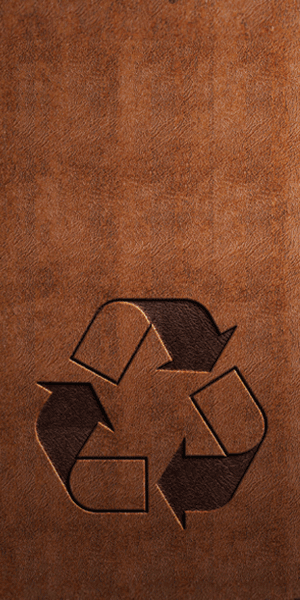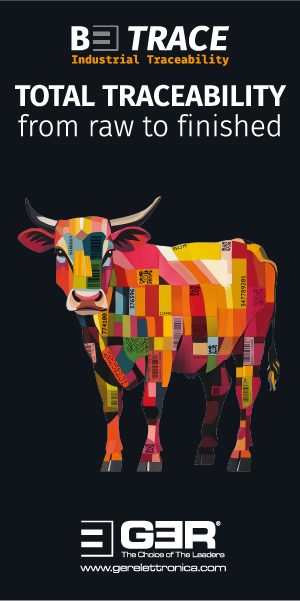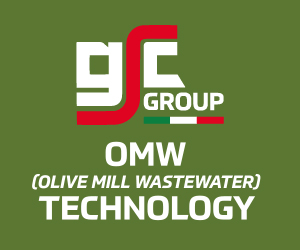Market Intelligence — 20.07.21
Macroeconomics
After appearing to be losing steam, at least in the northern hemisphere, the covid-19 pandemic is, unfortunately, reversing trends in some countries at the moment. Early relaxations and inadequate vaccination, especially among younger people, have caused cases to rise sharply again in many countries. The holiday season and major events such as the European Football Championship also contributed strongly to the spread. The question now remains whether this development will also lead to a new overload in hospitals. Most scientists do not expect to know the answer to this question until the autumn and we should all hope that their fears do not come true. At the same time, it is a shame that those who do not vaccinate without medical justification in privileged countries are not fulfilling their responsibility towards their fellow human beings.
In many developing countries, there is still a considerable shortage of vaccines and one can only hope that the material will be channelled there quickly, because the pandemic is not a local but a global problem. If conditions continue to deteriorate in these countries as the pandemic spreads, the unrest we are currently seeing could quickly become a more widespread problem. It would be naïve to ignore the development. The Olympic Games in Tokyo do not exactly promise to be a happy and joyful event for athletes and spectators at the moment. One rather gets the impression that the event is only to be held unconditionally by necessity and for commercial reasons.
OPEC could not really agree on a new deal. This continues to make the oil market very sensitive and volatile. Initially, however, this did not lead to any significant increase in the price of oil.
The questions over inflation will remain at the centre of economic focus. The national banks and many so-called experts continue to hold the view that there will be a manageable and temporary phase of rising prices. From the point of view of governments, especially those that have suffered from the pandemic, the position is understandable; sharply rising interest rates would overburden many national budgets. Nevertheless, economics is not about political wish-fulfilment and it would be good if those in charge could deal a little more urgently with the problem of the expected rising prices. Somehow, one gets the impression that political and economic decisions are being made more and more on the basis of ‘it will all work out, somehow’.
The laudable efforts of the European Commission to reduce emissions of greenhouse gases by 55% by 2030 and to push them to zero by 2050 will not reduce prices for goods and services either.
The gold market has started to react to the inflation data and the price of an ounce of gold rose well above $1800. The stock markets are also starting to lose momentum in view of possible rising interest rates. Indices are still holding near their record highs and investors have few alternative and attractive investment opportunities at the moment, but investors are beginning to worry whether the current situation will have a significant negative impact on earnings expectations for the coming years.
The US dollar benefited from rising inflation rates in the US and strengthened slightly against the euro to $1.18.
Leather Pipeline
In the northern hemisphere, the summer holiday season is beginning. Most businesses are closed for the first three weeks of August and, year after year, the summer break is becoming more concentrated into a shorter period of time; it no longer spreads from north to south, from July to the end of August.
The last few weeks have been marked by a noticeable increase in nervousness among all market participants. After almost a year of continuous price increases, producers of hides and skins remain positive, but resistance in the leather industry is clearly increasing.
We are in the final phase of the current season and the leather factories have no other choice but to fulfil their contracts and orders and to purchase the necessary raw materials and supplies. In addition, producers in Asia must slowly begin to make plans for the winter half-year. Of course, this also includes the supply of raw materials and careful calculations about talks with leather customers.
It is obvious that the industry is having a hard time with this at the moment. In China, a distinction must be made between companies that essentially serve the local market and those that are increasingly exporting their products. The situation for exporting companies is extremely difficult because not only are the costs of raw materials and chemicals rising, but transport has also become an important factor. Transport costs have risen sharply, but cost is not the only problematic factor. Time also plays a crucial role today. It is very difficult to meet guaranteed delivery times because international logistics carriers no longer accept any liability. If you are in a hurry and have to meet deadlines, you have to pay what is demanded. It is completely unclear whether this will change in the short term. In the meantime, some governments are already making efforts to hold international shipping lines to account, but it is rather doubtful whether they will have any success.
For some suppliers from Asia, the situation is already difficult. Delayed shipment definitely means delayed payment and, in some cases that we have heard of, there have already been cancellations of contracts for goods loaded into containers waiting in port for shipment. In addition to the difficulties and possible losses resulting from this, the corresponding assessment of the risk for the future is also derived from this. In short, many manufacturers are already thinking about how they can and must solve the situation, both in terms of price and contractual security. The negotiations will certainly not be easy because there are many factors that make the relationship and the negotiations between buyer and seller extremely difficult at the moment.
Consequently, this means that negotiations for many consumer goods made from leather will be difficult for the next season; producers in Asia are planning with great caution.
In Europe the situation is somewhat different as, traditionally, manufacturers have shorter supply chains and therefore do not have to plan quite so far in advance. Their competitiveness has also increased somewhat due to higher transport costs and uncertainties. While the supply chain can rely on customers and manufacturing in Europe, it certainly has a distinct advantage, at least for the moment.
In recent months, the focus in the leather pipeline has been on restocking supply chains. The situation has varied from market to market, but it is safe to assume that by the start of next season the situation will be back to some degree of equilibrium and the reduction in stocks from 2020 will be balanced again. Many companies report that, owing to the great uncertainties in the supply of many products, they are now ordering much more actively and in excess of their requirements. This may not be so pronounced for hides and skins, but for chemicals and other production-relevant materials, a certain overstocking is certainly taking place at the moment.
This means that we have to expect two different factors in the next production cycle. On the one hand, there are certain bottleneck situations; the semiconductor problem may serve as an example. On the other hand, it is also conceivable that there will be oversupply, which will then be followed by order restraint in the future. Put these two possibilities together and it becomes clear quite quickly that we could be heading for what could be a very unsettled period in the winter months, with a rare occurrence of simultaneous scarcity and abundance.
The European Commission’s decision regarding the reduction of emissions of greenhouse gases has been in the news. Anything that benefits living conditions on earth is, of course, always welcome but it almost never takes politics for the fine sensors in the economy to react to the changes in the markets. At least in the case of Europe, but probably also in the US and apparently even in China, it has been clear to companies for some time that business success can only be achieved with an environmentally friendly image.
Questions remain about how CO2 emissions are actually to be calculated and measured and whether there can be a truly reliable and fair system for this. At the moment, all kinds of climate certifications are proliferating and almost every company claims to want to be climate neutral within the next X years. At the moment, everyone seems to be carrying out their own calculations, or paying a third party to do so. Another critical point is how the distribution of the total burden of climate-damaging gases from the beginning to the end of the chain will be handled in the future. Running a leather factory in a climate-neutral way is no longer witchcraft, but it will be difficult if the leather processing industry arbitrarily demands climate neutrality from the supplier for the entire preceding chain, including transport. At the moment, image greenwashing is still prominent, but if the day comes when there is a dispute about who is responsible for what, it would be good for the leather industry to be prepared.
There is not much clarity. The magic year of 2030 keeps coming up. It is only a little over eight years until then, which is not such a long time for what has been announced. Looking at it soberly and expecting that public expectation will not diminish, there can really only be one conclusion at the moment, namely that supply chains must definitely become shorter wherever possible. By then, many passenger cars will probably be emission-free, but this can hardly be expected for intercontinental transport.
Not much has happened in the leather industry supply chain in recent weeks. Raw material buyers in Asia obviously expected the usual decline in raw material prices in the second quarter. That did not happen and is now putting buyers under considerable pressure. Either they will adjust to their raw material requirements for the start of production in September or risk not having enough raw material for production. As discussed above, the need for price increases from last season to the next is significant. The likelihood that the necessary increases can be successfully implemented based on current costs is not great. That is why the current resistance to commodity prices is increasing almost daily. How the battle will end will probably be seen by the end of August.
In Europe, the market continued to be supported by the relatively low slaughter, as well as the fact that short-term procurement left the leather industry with little choice but to pay the demanded prices for their preferred, higher-quality local cattle hides. With the start of the new production season comes an increase in the kill and this could reverse the trend. For the moment, all players in Europe seem to have resigned themselves to an almost completely stable situation until the end of the holidays.
The split market could be described as very quiet over the last few weeks. In China, prices for gelatine splits fell, in some cases quite significantly. Standard split for the leather industry was also rather difficult to sell. This is all the more surprising given the current price level for cattle hides, which should support demand for splits. Maybe it is just a seasonal dip, but the split market is also an indicator; it plays an important role in the calculations of the leather industry and further developments must be closely watched over the summer.
The improvement and recovery continued for sheepskins. Some isolated items such as new season lambskins in Europe saw strong demand from all markets. Prices increased slowly but steadily. Other skins may benefit from good demand for fine wool. The increased prices for small calf skins were followed by a positive development in demand for high-quality hair-on sheepskins, with prices also rising. Only the situation for lower qualities remains difficult.
In the coming weeks, the situation in the leather industry will probably develop randomly. Possibly the pandemic will play a bigger role. We notice that Chinese customers in particular are sensitive to the daily figures. If the holiday season and the easing of restrictions lead to a significant increase in the number of cases, people will react accordingly in their planning.
The commodity and financial markets will probably also be able to play a bigger role this summer. If they show major movement, this will have an impact on the leather industry. The production situation in the automotive industry must be observed very closely too. At the moment, even the production of luxury cars is being negatively affected by the shortage of semiconductors. The automotive industry had an excellent first half and this signals optimism for the rest of the year. The difficulties in transport logistics will also be with us for some time.
We therefore expect the risks to outweigh the opportunities in the coming months. In the best of all cases, we will make it to September without any major events and no major change in prices. That would be the most positive option for us at the moment.
















